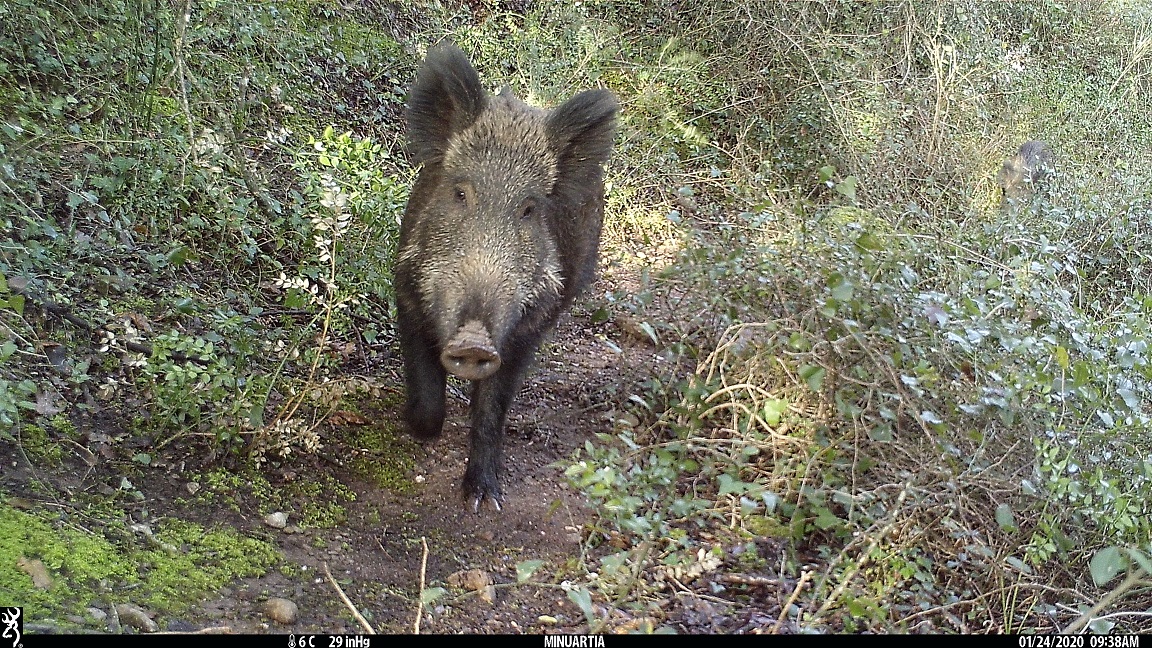08-09-2021
The "Reservoir Effect" is an opportunity to mitigate human-wild boar conflicts
A study published in the journal Science of the Total Environment by Joana Colomer, industrial doctoral candidate at Minuartia and Institute for Research on Biodiversity - IRBio UB, Carme Rosell (Minuartia), José Domingo Rodriguez-Teijeiro (IRBio and Evolutionary Biology, Ecology and Environmental Sciences Dept. of Faculty of Biology UB) and Giovanna Masse (UK Animal and Plant Health Agency), describes the reserve effect and the opportunities it implies for controlling wild boar populations and mitigating the conflicts they cause. The initial study was funded by Diputació de Barcelona and was carried out in two nature reserves within the Montseny Natural Park.
Growth of wild boar populations
Wild boar populations have grown significantly in recent decades throughout Europe. This growth has been due to different reasons, such as the great adaptability of this species to colonize different habitats, the lack of natural predators and a high reproductive rate. The combination of these factors means that this species has a great capacity to occupy new territories and even to inhabit urban areas more and more frequently.
This fact makes the interaction between the wild boar and human activity inevitable, and the conflicts it causes have increased in recent years. Some of the most frequent are damage to agriculture, infrastructure, traffic accidents, risk of disease transmission, and impacts on biodiversity conservation, among others. In addition, these impacts also have important economic implications, since the costs derived from accidents and damage caused by wild boar amount to millions of euros.
Mitigation of damage and control of wild boar populations
To mitigate these impacts, it is necessary to control the wild boar population by involving the various agents involved, such as wildlife managers, landowners, farmers, hunters and public administrations, including animal health services, in the context of the risk of expansion of African Swine Fever. Population control is mainly done through recreational hunting, and to a lesser extent through administrative captures.
In this study, photo-trapping cameras were used to evaluate the presence of wild boar within two nature reserve zones, where regular hunting of wild boar is not permitted, and only sporadic hunting is authorized for population control. The results indicate that these areas act as refuges where wild boars escaping from the surrounding hunting areas concentrate. This phenomenon is called the "reserve effect" and causes localized density increases in areas where hunting is prohibited.
The results also show that organized hunts inside these reserves are effective, and with a single action a very significant decrease in density can be achieved, which is also maintained over a long period of time. Therefore, the existence of these refuge areas also presents opportunities to apply very efficient population control measures. These results are also relevant for the management of disease outbreaks in wild boar, such as African Swine Fever during the control and eradication phases. It may also be applicable to disease vaccination campaigns.
